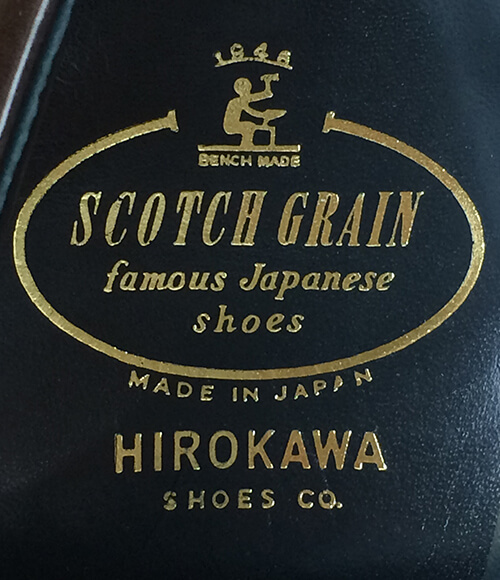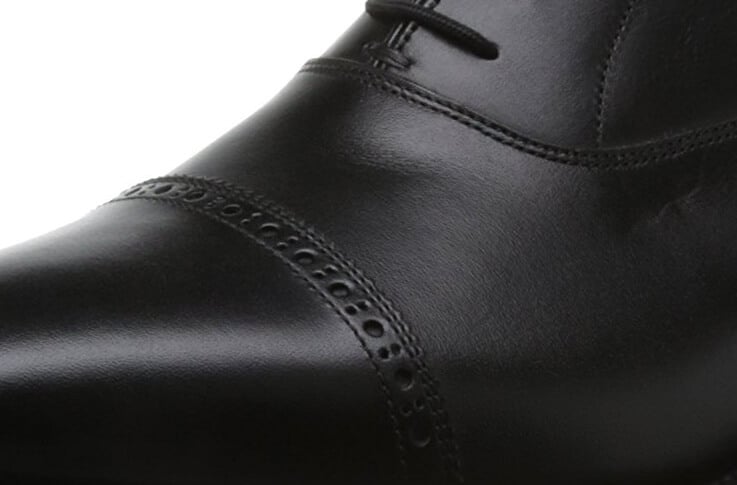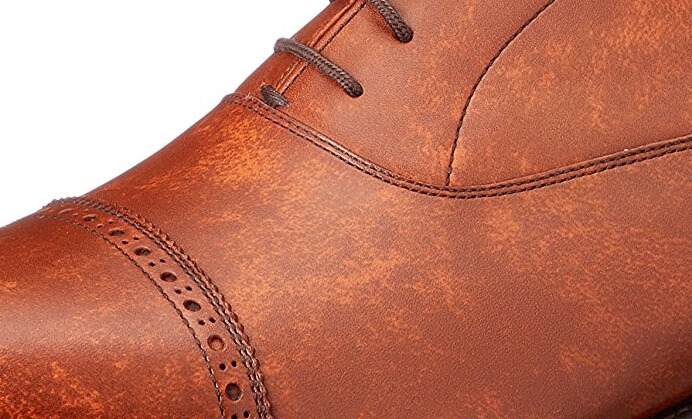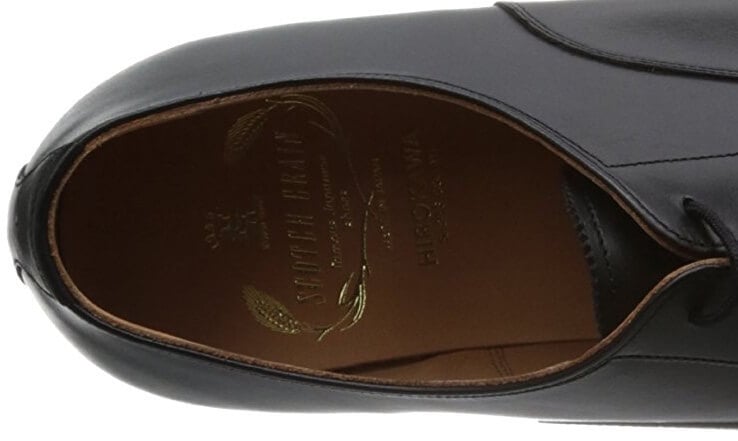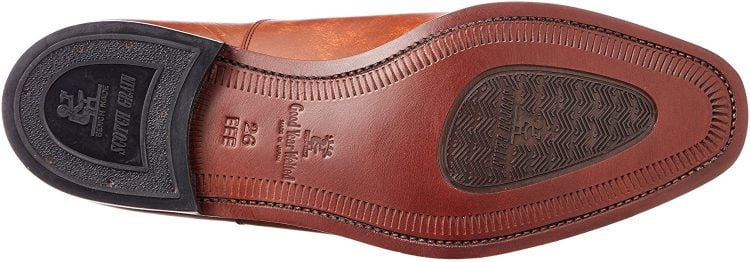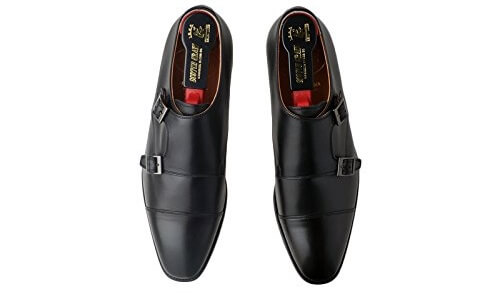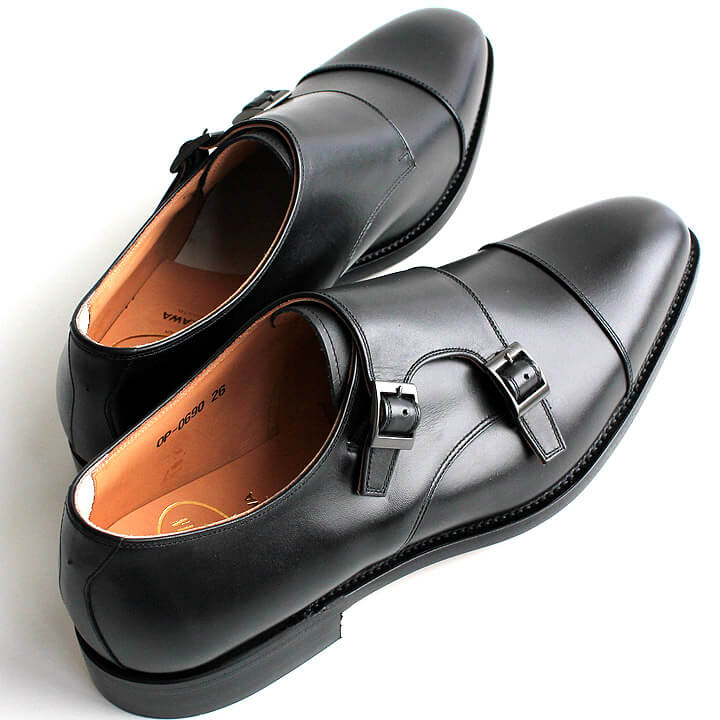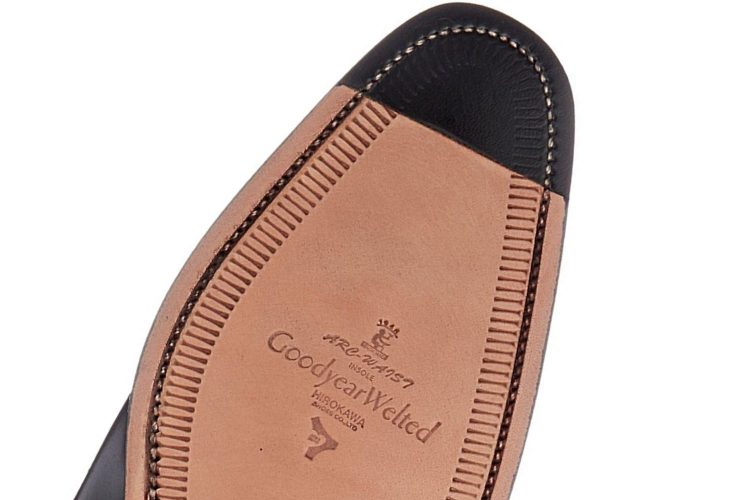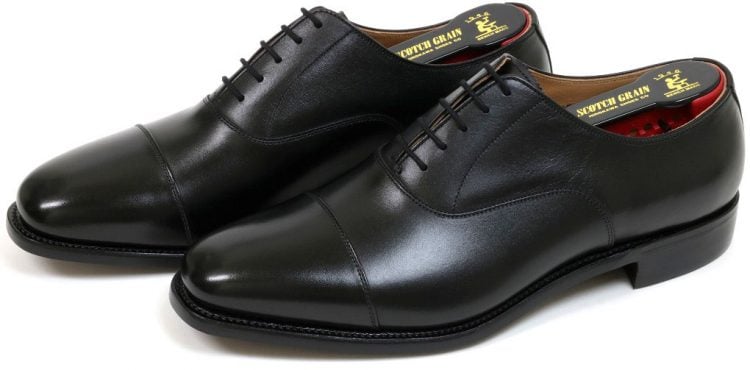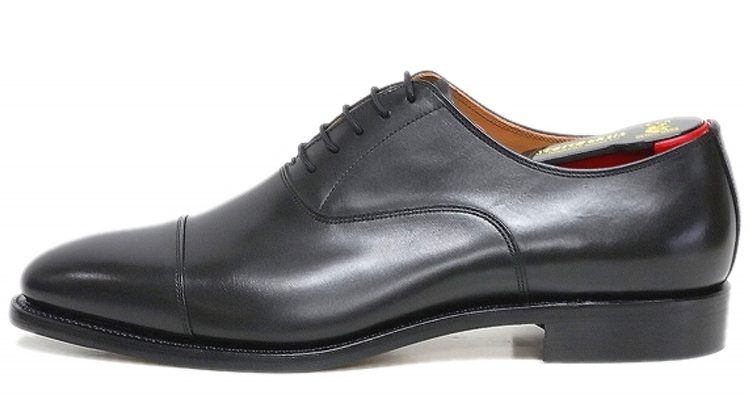
Scotch Grain is one of Japan’s leading leather shoe brands, boasting a selection of high quality materials, a commitment to Goodyear welt, and reliable stitching techniques by skilled Japanese craftsmen, yet offering an overwhelmingly good cost performance in the 30,000 yen range. In this issue, we focus on Scotch Grain and introduce its charm and recommended models!
Suponsered by
Scotch Grain pursues quality from material selection to sewing
Scotch Grain is a shoe brand developed by Hirokawa Shoes of Japan. Founded in 1964 by Goro Hirokawa in Taito-ku, Tokyo, Hirokawa Seisakusho began selling Scotchgrain shoes as its original brand in 1978. Scotch grain leather,” from which the brand name is derived, is a leather manufacturing method. It is a leather processing method in which fine grain embossing is engraved on the surface, and is said to have originated in Scotland, where a pattern of wheat was accidentally put on the leather. As the brand name suggests, Scotch Grain is uncompromising in its pursuit of quality, not only in leather materials but also in every single thread. The company’s craftsmen carry out integrated production at its factory in Sumida-ku, Tokyo, and produce shoes that fit Japanese people’s feet.
Scotch grain leather carefully selected from prestigious tanneries around the world
Scotch Grain’s commitment to leather is so great that the type of leather is used as the brand name. The company president, who is also a skilled craftsman, travels around the world to negotiate directly with top tanneries. He purchases materials from European countries such as Germany, France, Italy, and England, paying close attention to quality. For example, some models are made of high-quality leathers used by famous overseas brands such as Annonay of France. For domestic leathers, the company also collects high quality leathers from Himeji and Tochigi, and allows no compromise at all.
Click here for details and purchase
Scotch Grain leathers that make the most of the “individuality” of leathers from around the world.
Even though leathers from prestigious tanneries are generally called “leathers,” they vary in quality. Therefore, Scotch Grain has established strict selection criteria to determine the “individuality” of leather. Just as each person’s skin is different, each piece of leather processed from cow skin is unique. No matter how carefully the tanning process is carried out, these differences, called “individual differences,” are inevitable. Scotch Grain’s craftsmen inspect the leather sent from the tannery to determine if it is of a suitable grade for use in their products. Another strength of this leather shoe brand is that it carefully utilizes the unique characteristics of natural materials such as “tiger” and “bloodstains. The luster produced by each leather fiber is one of the proofs that the leather is of high quality.
Click here for details and to purchase
Scotch Grain’s commitment to using only the finest materials for the lining of all models
Scotch Grain products are classified into different grades according to quality, from the exclusive line to the standard line. Naturally, the higher the grade, the better the quality of the leather used for the upper leather, but the ” lining ” is the same material used for all grades. This is because the lining is the part that directly touches the foot. Scotch Grain uses the finest cowhide leather imported from Bangladesh for the lining and inner sole. Because it is the part that touches the foot, we thoroughly pursue a finish that is close to the natural texture of leather.
Click here for details and to purchase
While there are not a few leather shoe manufacturers that do not provide a lining, Scotch Grain is the only company that uses a lining on the entire surface of the shoe, even the toes. This is because Scotchgrain takes into consideration the support for comfortable walking, such as the reduction of steam when wearing shoes for a long time and the promotion of sweat absorption, regardless of the grade of the shoe.
Scotch Grain offers 32 different sizes
While it is common for shoe manufacturers in the same price range to match sizes based on foot length alone, Scotch Grain offers 32 different sizes by providing four different ” whiz ” units for measuring foot width in addition to foot length in 0.5 cm increments from 23.5 cm to 27.0 cm. If you visit a physical store, a professional staff member will carefully explain the foot length and width size that is right for you.
Click here for details and to purchase
Scotch Grain’s wooden pattern fits Japanese foot shape
It is not an exaggeration to say that the wooden pattern determines whether a pair of leather shoes fits your foot or not. Scotch Grain’s wooden patterns are manufactured by skilled shoemakers who have accumulated many years of experience and cut them down to the nearest few tenths of a millimeter.
Click here for details and to purchase
Scotch Grain’s wooden pattern even takes into account the walking habits of Japanese people!
No matter how popular European brands’ leather shoes are, it is a fact that they are not made to fit Japanese people’s foot shape. Scotch Grain believes that even if high-quality leather is used, if it does not fit Japanese people’s feet, it is not a good shoe. The brand takes the utmost care in shaping wooden patterns, an important factor in determining comfort, by studying not only the shape of the Japanese foot, but also their walking habits. Since its establishment, the brand has continued to create wooden patterns for approximately 10,000 pairs of shoes. Scotch Grain is proud of the experience it has accumulated since the brand was launched in 1978.
Click here for details and purchase
All Scotch Grain leather shoes are made with the Goodyear Welt method that can be used for many years.
All Scotch Grain shoes are manufactured using the Goodyear welt method. The leather shoes are completed by scooping and sewing the three parts of the shoe, the upper “instep,” the “welt,” which serves as the stitching line, and the “sole,” which is located on the sole, with a single thread, and can be used for a long time by wearing them while performing maintenance.” This is the reason why Scotch Grain has stuck to the Goodyear Welt method since the company’s founding.
Click here for details and purchase
Scotch Grain’s Goodyear Welt method improves cushioning with original parts
In the general Goodyear welt method, kneaded cork is used as a cushioning material, but cork has the disadvantage of deteriorating easily and losing its elasticity. Scotch Grain reinforces elasticity by using EVA sponge, which does not deteriorate easily. In addition, plastic parts are used for the shank of the toe, instead of metal, to increase strength and reduce weight. The outsole is made of leather from Italian tannery CMC. Two different thicknesses are used depending on the shoe size, in pursuit of a comfortable walking feel.
Click here for details and to purchase
The greatest charm of Scotch Grain! Unparalleled cost performance
Scotch Grain’s leather shoes are made of high quality leather, manufactured by the Goodyear Welt method that can be used for many years, and have a calculated wooden pattern that fits Japanese people’s foot shape. While making shoes without compromise, Scotch Grain has achieved an overwhelmingly good cost performance, with prices starting in the 30,000s yen range. It is no exaggeration to say that Scotch Grain’s greatest appeal is that you can get high quality leather shoes made by skilled craftsmen in Japan at this price range.
Click here for details and to purchase
Scotch Grain series list and how to identify the model number
Scotch Grain has a background of creating many wooden patterns, which enables them to develop a wide variety of series. Each series has its own personality, and the brand’s strength lies in its ability to meet a wide range of needs. In addition, the majority of Scotch Grain models can be identified by their model numbers. The model number consists of three to four digits plus a letter of the alphabet, with the first three digits representing the series name, the fourth digit representing the style, and the letter of the alphabet representing the color. For example, 958BL would be “958 = Imperial Prestige” and “BL = Black”; 3526DBL would be “352 = Assurance,” “6 = Straight Tip” and “DBL = Dark Brown.”
| Series name | Features | Number |
|---|---|---|
| Imperial Prestige | Made of the finest calf and other selected materials top-of-the-line series |
956/ 958/ 959 |
| Imperial II | An authentic continuation of the tradition of the first model ” Imperial ” | 936/ 938 |
| Imperial III | Business or casual
dressy design for both business and casual |
960 |
| Imperial Black | A dress model that pursues a commitment to black |
946 |
| Imperial Black II | Adopting the wooden pattern of gem born from a long history |
948 |
| Odessa | Using a slender wood pattern Stylish Long Nose Series |
91 |
| Odessa II | Inheriting the long nose style while pursuing quality of the upper |
920 |
| Broden II | European box calf luxury upper |
24 |
| Belle Homme | Slim line that brings out the natural luster of calf | 756 |
| Belle Homme Marble | Marble-inspired patterned individualism |
756 |
| Assurance | Well-balanced form and comfort keep it well-loved Royal road series |
352/ 353 |
| Flexible | Long-selling series that offers a sense of stability | 351 |
| 4E with | Wide series tailored with wide width and high instep | 401 |
| Avance | With chisel toe urban wood pattern |
171 |
| LIBERO | Combines sharp design with soft sole |
797 |
| Shine or Rain III | Rain-ready series using water-repellent leather | 272 |
| Shine or Rain IV | Sharper wood shape than Shine or Rain III Stylish form |
277 |
| Shine or Rain 4E with | 4E size model that pursues ease of walking on rainy days |
422 |
| Boots | A boot series that harmonizes design and function | 560 |
| Brick Casual | Casual model with classic features |
74 |
| King size | Big size model | 525 |
In the case of styles, the numbers seem to be assigned around standard designs such as straight tips.

